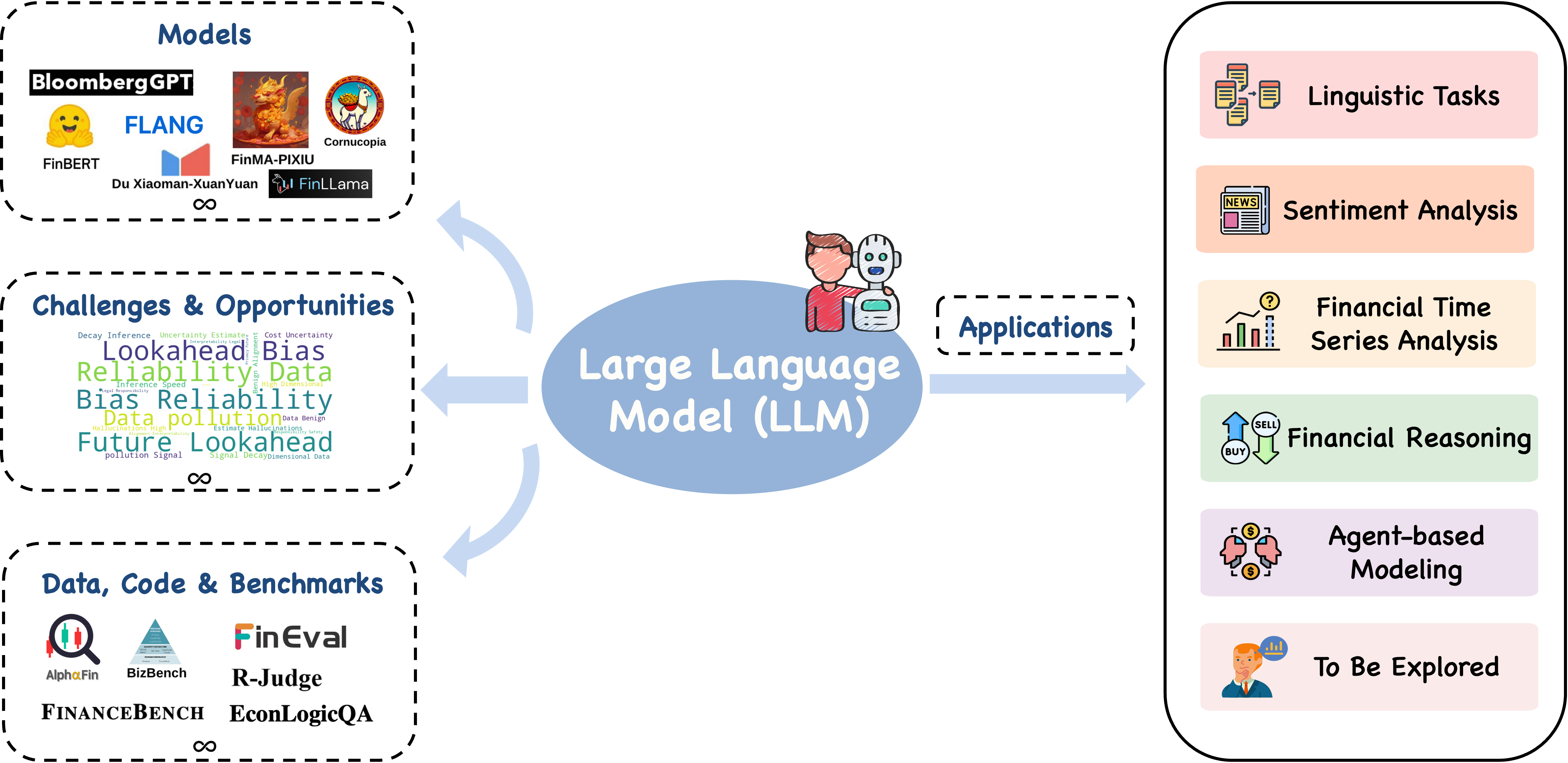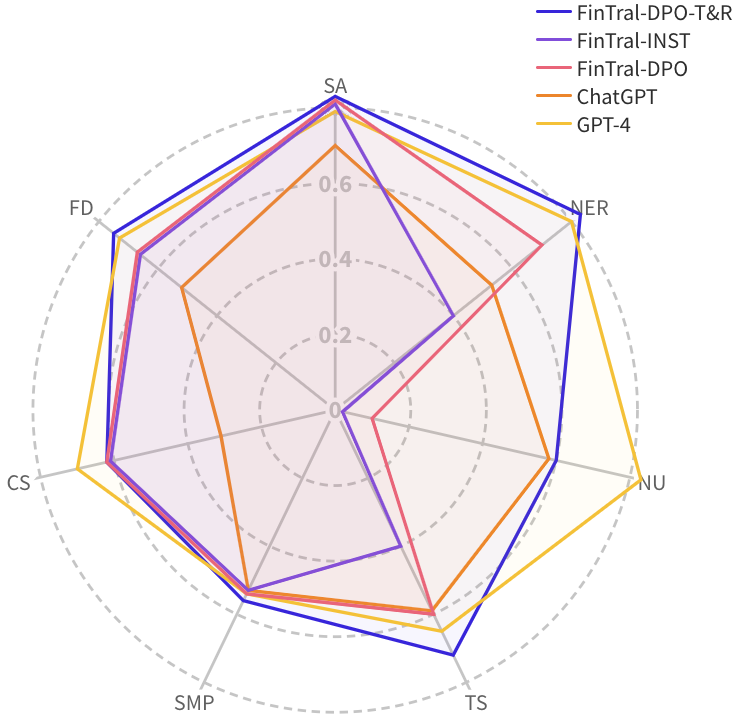Open-FinLLMs: Open Multimodal Large Language Models for Financial Applications

0

Sign in to get full access
Overview
- Open-FinLLMs presents a new class of open multimodal large language models (LLMs) for financial applications.
- These models integrate financial data and knowledge to improve performance on financial tasks.
- The paper introduces two key models: FinGPT and FinBERT, and evaluates their performance on various financial benchmarks.
Plain English Explanation
The researchers have developed a new type of large language model that is specially designed for financial applications. These models, called Open-FinLLMs, incorporate financial data and knowledge to improve their ability to understand and generate financial information.
The two key models introduced in the paper are FinGPT and FinBERT. FinGPT is a large language model based on the GPT architecture, which has been fine-tuned on financial data to enhance its performance on financial tasks. FinBERT is a BERT-based model that has also been trained on financial data and knowledge.
The researchers evaluate the performance of these models on a variety of financial benchmarks, such as stock price prediction, sentiment analysis, and document classification. The results show that the Open-FinLLMs outperform traditional language models that have not been optimized for financial applications.
Technical Explanation
The paper introduces a new class of open multimodal large language models (Open-FinLLMs) for financial applications. These models integrate financial data and knowledge to improve performance on financial tasks.
The researchers present two key models: FinGPT and FinBERT. FinGPT is a large language model based on the GPT architecture that has been fine-tuned on financial data. FinBERT is a BERT-based model that has also been trained on financial data and knowledge.
The paper evaluates the performance of these models on a range of financial benchmarks, including stock price prediction, sentiment analysis, and document classification. The results show that the Open-FinLLMs outperform traditional language models that have not been optimized for financial applications.
Critical Analysis
The paper provides a promising approach to developing large language models that are specifically tailored for financial applications. The integration of financial data and knowledge is a key strength of the Open-FinLLMs, as it allows the models to better understand and generate financial information.
However, the paper does not explore the limitations or potential issues with these models. For example, the researchers do not discuss how the models might perform on more specialized or niche financial tasks, or how they might handle rare or out-of-distribution financial data. Additionally, the paper does not address potential ethical concerns, such as the use of these models for high-stakes financial decision-making.
Further research is needed to fully understand the capabilities and limitations of Open-FinLLMs, and to explore how they can be safely and responsibly deployed in real-world financial applications.
Conclusion
The Open-FinLLMs presented in this paper represent a significant step forward in the development of large language models for financial applications. By integrating financial data and knowledge, these models demonstrate improved performance on a range of financial tasks compared to traditional language models.
The potential implications of this research are substantial, as these models could be used to enhance a wide variety of financial applications, from stock price prediction to document analysis and beyond. As the field of financial AI continues to evolve, the Open-FinLLMs introduced in this paper may prove to be an important tool for unlocking new opportunities and driving innovation in the financial sector.
This summary was produced with help from an AI and may contain inaccuracies - check out the links to read the original source documents!
Related Papers


0
Open-FinLLMs: Open Multimodal Large Language Models for Financial Applications
Qianqian Xie, Dong Li, Mengxi Xiao, Zihao Jiang, Ruoyu Xiang, Xiao Zhang, Zhengyu Chen, Yueru He, Weiguang Han, Yuzhe Yang, Shunian Chen, Yifei Zhang, Lihang Shen, Daniel Kim, Zhiwei Liu, Zheheng Luo, Yangyang Yu, Yupeng Cao, Zhiyang Deng, Zhiyuan Yao, Haohang Li, Duanyu Feng, Yongfu Dai, VijayaSai Somasundaram, Peng Lu, Yilun Zhao, Yitao Long, Guojun Xiong, Kaleb Smith, Honghai Yu, Yanzhao Lai, Min Peng, Jianyun Nie, Jordan W. Suchow, Xiao-Yang Liu, Benyou Wang, Alejandro Lopez-Lira, Jimin Huang, Sophia Ananiadou
Large language models (LLMs) have advanced financial applications, yet they often lack sufficient financial knowledge and struggle with tasks involving multi-modal inputs like tables and time series data. To address these limitations, we introduce textit{Open-FinLLMs}, a series of Financial LLMs. We begin with FinLLaMA, pre-trained on a 52 billion token financial corpus, incorporating text, tables, and time-series data to embed comprehensive financial knowledge. FinLLaMA is then instruction fine-tuned with 573K financial instructions, resulting in FinLLaMA-instruct, which enhances task performance. Finally, we present FinLLaVA, a multimodal LLM trained with 1.43M image-text instructions to handle complex financial data types. Extensive evaluations demonstrate FinLLaMA's superior performance over LLaMA3-8B, LLaMA3.1-8B, and BloombergGPT in both zero-shot and few-shot settings across 19 and 4 datasets, respectively. FinLLaMA-instruct outperforms GPT-4 and other Financial LLMs on 15 datasets. FinLLaVA excels in understanding tables and charts across 4 multimodal tasks. Additionally, FinLLaMA achieves impressive Sharpe Ratios in trading simulations, highlighting its robust financial application capabilities. We will continually maintain and improve our models and benchmarks to support ongoing innovation in academia and industry.
Read more8/23/2024


1
A Survey of Large Language Models for Financial Applications: Progress, Prospects and Challenges
Yuqi Nie, Yaxuan Kong, Xiaowen Dong, John M. Mulvey, H. Vincent Poor, Qingsong Wen, Stefan Zohren
Recent advances in large language models (LLMs) have unlocked novel opportunities for machine learning applications in the financial domain. These models have demonstrated remarkable capabilities in understanding context, processing vast amounts of data, and generating human-preferred contents. In this survey, we explore the application of LLMs on various financial tasks, focusing on their potential to transform traditional practices and drive innovation. We provide a discussion of the progress and advantages of LLMs in financial contexts, analyzing their advanced technologies as well as prospective capabilities in contextual understanding, transfer learning flexibility, complex emotion detection, etc. We then highlight this survey for categorizing the existing literature into key application areas, including linguistic tasks, sentiment analysis, financial time series, financial reasoning, agent-based modeling, and other applications. For each application area, we delve into specific methodologies, such as textual analysis, knowledge-based analysis, forecasting, data augmentation, planning, decision support, and simulations. Furthermore, a comprehensive collection of datasets, model assets, and useful codes associated with mainstream applications are presented as resources for the researchers and practitioners. Finally, we outline the challenges and opportunities for future research, particularly emphasizing a number of distinctive aspects in this field. We hope our work can help facilitate the adoption and further development of LLMs in the financial sector.
Read more6/19/2024
💬

0
Large Language Models in Finance: A Survey
Yinheng Li, Shaofei Wang, Han Ding, Hang Chen
Recent advances in large language models (LLMs) have opened new possibilities for artificial intelligence applications in finance. In this paper, we provide a practical survey focused on two key aspects of utilizing LLMs for financial tasks: existing solutions and guidance for adoption. First, we review current approaches employing LLMs in finance, including leveraging pretrained models via zero-shot or few-shot learning, fine-tuning on domain-specific data, and training custom LLMs from scratch. We summarize key models and evaluate their performance improvements on financial natural language processing tasks. Second, we propose a decision framework to guide financial professionals in selecting the appropriate LLM solution based on their use case constraints around data, compute, and performance needs. The framework provides a pathway from lightweight experimentation to heavy investment in customized LLMs. Lastly, we discuss limitations and challenges around leveraging LLMs in financial applications. Overall, this survey aims to synthesize the state-of-the-art and provide a roadmap for responsibly applying LLMs to advance financial AI.
Read more7/10/2024


0
FinTral: A Family of GPT-4 Level Multimodal Financial Large Language Models
Gagan Bhatia, El Moatez Billah Nagoudi, Hasan Cavusoglu, Muhammad Abdul-Mageed
We introduce FinTral, a suite of state-of-the-art multimodal large language models (LLMs) built upon the Mistral-7b model and tailored for financial analysis. FinTral integrates textual, numerical, tabular, and image data. We enhance FinTral with domain-specific pretraining, instruction fine-tuning, and RLAIF training by exploiting a large collection of textual and visual datasets we curate for this work. We also introduce an extensive benchmark featuring nine tasks and 25 datasets for evaluation, including hallucinations in the financial domain. Our FinTral model trained with direct preference optimization employing advanced Tools and Retrieval methods, dubbed FinTral-DPO-T&R, demonstrates an exceptional zero-shot performance. It outperforms ChatGPT-3.5 in all tasks and surpasses GPT-4 in five out of nine tasks, marking a significant advancement in AI-driven financial technology. We also demonstrate that FinTral has the potential to excel in real-time analysis and decision-making in diverse financial contexts. The GitHub repository for FinTral is available at url{https://github.com/UBC-NLP/fintral}.
Read more6/17/2024